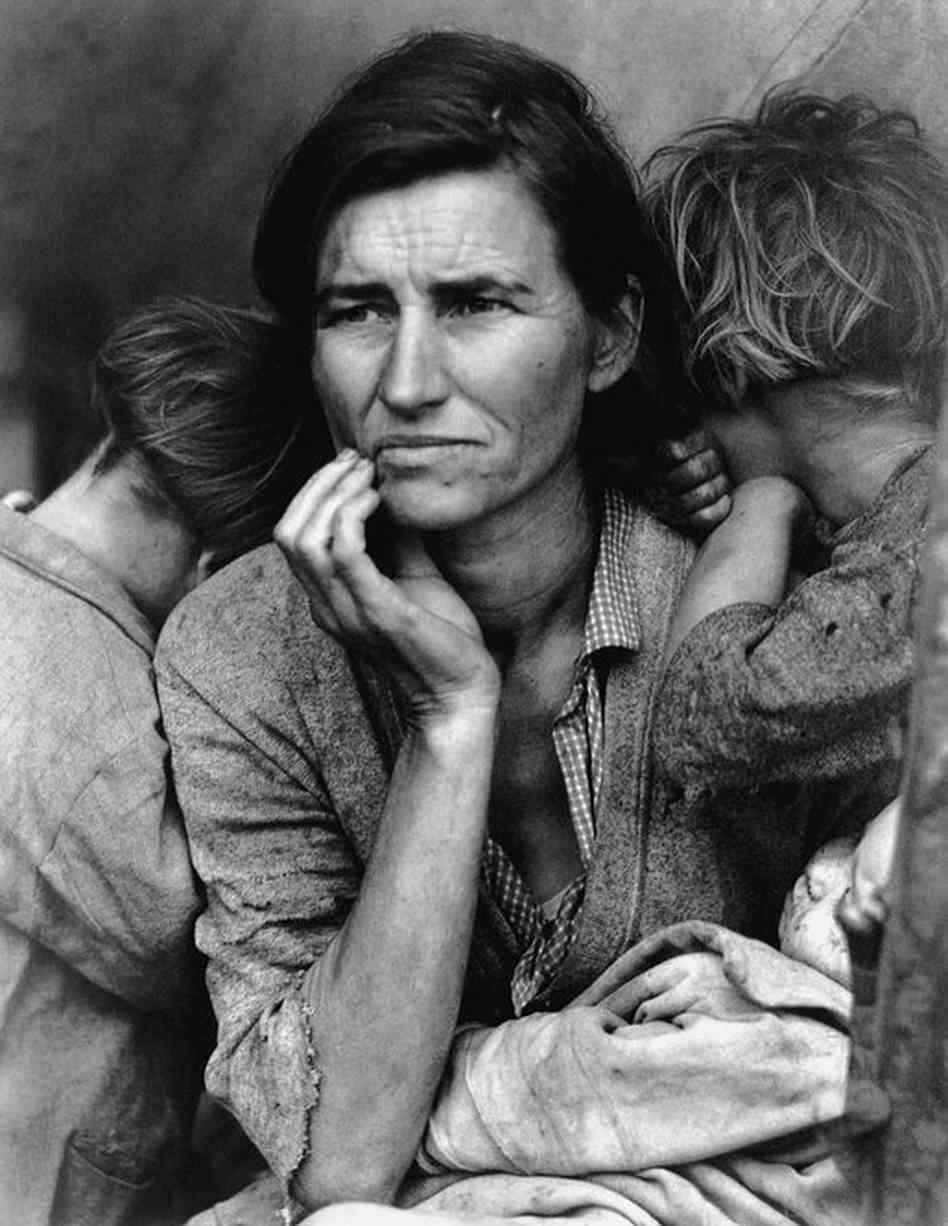Opponents of same-sex marriage are worried that a picture of a same-sex couple getting married will have the same influence as this picture.

That’s at the heart of a news story today that otherwise had nothing to do with the art of Dorothea Lange.
Today, the U.S. Supreme Court declined to hear the case of a New Mexico photographer who refused the job of photographing a same-sex commitment ceremony. You may recall in the Legislature’s debate about same-sex marriage, the mythical wedding photographer who would be forced to take pictures against her will was a common theme.
Elaine Huguenin is that photographer and her case is the first to reach the Supreme Court, which wanted nothing to do with it. It rejected the case without comment.
That leaves the New Mexico Supreme Court decision intact. It held that business owners do not have a constitutional right to be free from compelled speech because they create expression for paying customers.
But although it declined to hear the case, the justices of the U.S. Supreme Court got a look at the arguments by way of filings to convince them to take the case on.
The attorney for Huguein argued the decision strips away First Amendment freedoms for all “creators of expression.”
Such disregard for the constitutional rights of these professionals threatens to drive them from the marketplace. Not only would that limit the expressive options available to the public, it would cost these individuals their livelihoods. Whether the First Amendment permits this result is a question that warrants this Court’s review.
Vanessa Willock, the woman who tried to hire Huguein responded in her brief:
Moreover, when the Company sells its goods and services to the general public, it is not a private actor engaged in the expression of its own message. Customers do not pay for the privilege of facilitating the Company’s message. Customers pay to have their own event memorialized. The Company does bring creative skill to the goods and services it provides.
That is why it is able to charge a fee. But customers pay for services and products that are tailored to the customers’ needs. The same would be true for a graphic design company or a website specialist. All are businesses that charge for their creative expertise.None charges customers for the privilege of facilitating the companies own views.
And there’s the question: Is a wedding picture an artistic expression carrying a message from the photographer. Or is it just something the customers ordered?
A group of wedding photographers also filed a brief in support of Huguein, and included iconic images of the girl running naked from a napalm attack in Vietnam, Mike Jordan dunking a basketball, and a man standing up to a tank in Tiananmen Square in China, and the famous Alfred Eisenstadt photo of a sailor kissing a nurse in Times Square at the end of World War II, all to make a point that photography is expression.
In addition to the artistic communication of a message, the finished product has the potential to be a “molder of opinion.” Specifically, images utilized in photojournalism may have “more influence on public thinking and opinion than any other branch of photography.” Dorothea Lange recognized this fact when, during the depression, she photographed the “breadlines of the homeless and unemployed . . . so that others might feel the compassion she so deeply felt.” Indeed, it cannot reasonably be debated that certain images—such as those included below—have
captured world events with a clarity and intensity that words cannot match.The New Mexico Supreme Court’s proposed solution—that photographers such as Elane Photography can effectively offset any expression they are compelled to make by posting a disclaimer— gives no regard to the weightiness of a photograph and the indelible mark it leaves on those who view it.
Eugene Volokh, the UCLA professor and legal blogger, agreed in his brief:
Moreover, the photographs at a wedding must implicitly express a particular viewpoint: Wedding photographers are hired to create images that convey the idea that the wedding is a beautiful, praiseworthy, even holy event. Mandating that someone make such expressive decisions, and create photographs that depict as sacred that which she views as profane, jeopardizes the person’s “freedom of mind” at least as much as would mandating that she display on her license plate “Live Free or Die” or “Land of Enchantment.”
Eight other states also supported the idea of the Supreme Court hearing the case.
By rejecting to do so, the Supreme Court appears to have sent a message to wedding photographers (at least in New Mexico) for now: “Just take the picture.”
